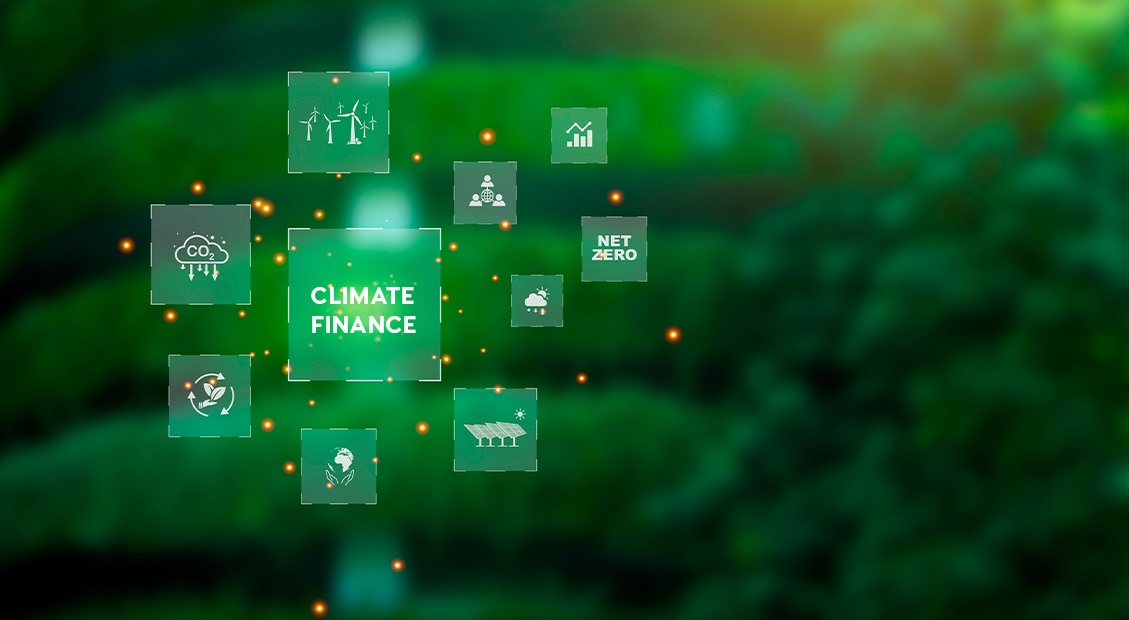The Asian Infrastructure Investment Bank (AIIB) was born at a time when the world was correcting itself.
In 2015, amid the growing threat posed by climate change, almost every country in the world signed the Paris Agreement. Thus was born the 1.5°C and 2°C climate benchmarks, with 195 nations pledging to hold the planet’s temperature to “well below 2 degrees Celsius above pre-industrial levels” while aiming to “limit temperature rise to 1.5 degrees Celsius.”
It was during this planet-changing moment when AIIB was born—ahead of the Paris Agreement. AIIB’s Articles of Agreement were signed on June 29, 2015 and entered into force on Dec. 25, 2015. The Paris Agreement was signed on April 22, 2016 and entered into force on Nov. 4, 2016. Eight years later, the world finds itself preparing for COP28—to be held Nov. 30 to Dec. 12, 2023—in the United Arab Emirates, one of AIIB’s 57 founding Members.
Since Jan. 16, 2016 when AIIB officially began operations, we’ve made strides on the climate front. In February 2016, our Environmental and Social Framework was approved—a roadmap toward protecting people and the environment. We later updated the framework in February 2019. In 2020, AIIB embraced its mission of “Financing Infrastructure for Tomorrow” or i4t. That same year in September, with the AIIB-Amundi Climate Change Investment Framework, we adopted a holistic assessment of both climate change risks and opportunities in line with the objectives of the Paris Agreement. In 2022, we updated our Energy Sector Strategy with sustainable energy for tomorrow at its core.
In 2023, we issued our first Climate Adaptation Bond, a thematic bond under our Sustainable Development Bond Framework that was well received and more than two times oversubscribed. Proceeds of about USD340 million will be allocated to projects whose climate adaption finance portion is 20 percent or greater of the total project financing. In July 2023, AIIB announced Paris alignment for all projects going forward. By September 2023, out of USD25.25 billion in total regular financing since inception, USD11.75 billion was for climate financing. In the same month, we launched our first Climate Action Plan, designed to guide AIIB’s climate ambition from 2024-2030. Moreover, we are on track to meet an ambitious climate finance target of 50 percent of all financing approvals by 2025, in our ambition to become Asia’s climate partner.
However, we do not intend to weather climate change alone. AIIB’s President himself, Jin Liqun, called for a forum for multilateral development banks (MDBs) to discuss progress and actions on climate finance. MDBs have, in fact, been collaborating on this front. Worldwide MDB climate finance in 2022 has reached almost USD100 billion, up from USD82 billion in 2021, according to a joint report from MDBs, including AIIB.
“If humanity’s moonshot to net-zero is to be successful, then coordination and collaboration in climate finance is mission critical,” said AIIB President Jin.
These are some of our actions to help the world arrest global temperature rise to below 2°C and go further by keeping it to 1.5°C. Consider the following data from the Intergovernmental Panel on Climate Change:[1]
Average and extreme temperatures will be higher in all inhabited areas under 2°C of warming versus 1.5°C. Under 2°C of warming, 37 percent of the world’s population would be exposed to severe heat waves. Economic losses will rise as temperatures rise, with middle-income countries (Africa, Southeast Asia, India, Brazil, Mexico) projected to be most affected. For example, if warming is limited to 1.5°C, global GDP losses would be 0.3 percent by 2100, compared with 0.5 percent of losses with 2°C of warming.
About 18 percent of insects, 16 percent of plants and 8 percent of vertebrates worldwide are projected to lose more than half of their ranges. Risks to human health, including heat-related morbidity and mortality in urban areas, become higher with 2°C of warming.
The risk of flooding is also greater with higher temperature rise. With warming of 2°C, 35-47 percent of the Arctic’s permafrost would thaw by 2100, an area that is three-quarters the size of Australia. At 2°C, sea levels would rise by 0.46 meters in 2100, and up to 79 million people could be exposed to floods.
The risks of food shortages are projected to be lower in the Sahel, Southern African, Mediterranean and Amazon regions under 1.5°C of warming than they would be at 2°C of warming. Fisheries and aquaculture also experience lower risks if warming stays at 1.5°C.
These data show that half a degree of warming (from 1.5°C to 2°C) matters—a lot. Moreso by the year 2100.
Dear reader, there is a possibility that you and I—and the people reading this blog on the day it was published—will no longer be around by 2100. But our children and their children may still be. How can we help them live better lives in the next century?
From our end, it is by financing i4t—infrastructure that is environmentally, socially, financially and economically sustainable. Infrastructure is a long-lasting asset that is hugely impactful. Infrastructure generates prosperity and wealth, has a positive impact on the economy, people and biodiversity. At AIIB, we consider ourselves the custodians of USD100 billion in taxpayers’ money. Using these funds wisely for i4t would ensure the future of children in the 109 territories which comprise our Membership, and beyond.
As COP28 approaches, we at AIIB reflect on our eight years of operations, and our evolving role in the survival of our planet. Ours is the responsibility of conscientiously utilizing the public goods entrusted to us. Ours is the privilege of ensuring a prosperous and sustainable Asia by keeping global warming within the 1.5°C threshold.
[1] Half a Degree and a World Apart: The Difference in Climate Impacts Between 1.5˚C and 2˚C of Warming
https://www.wri.org/insights/half-degree-and-world-apart-difference-climate-impacts-between-15c-and-2c-warming


